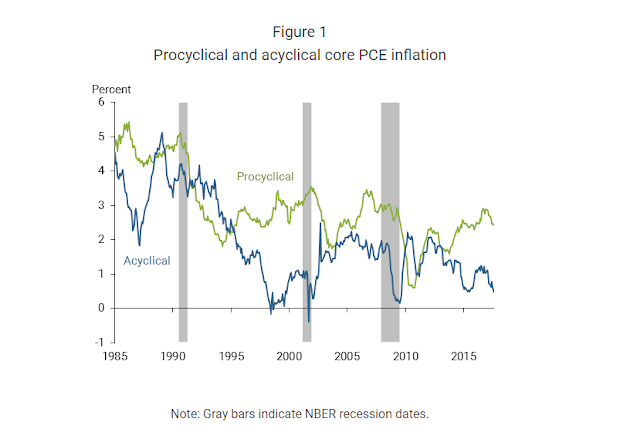What's Down with Inflation?
This new research is published from San Francisco FED Team. You can download full research from this link.
Everything is ok, yes?
Everything is ok, yes?
The
labor market has fully recovered, the dollar has appreciated, and oil prices
are no longer declining as rapidly, Chair Janet Yellen recently said that the
reason why inflation remains low is a “mystery” (Yellen 2017).
What is the procyclical and acyclical inflation ?
We
distinguish between categories where inflation has historically exhibited a procyclical relationship with overall
economic conditions, moving in tandem
with the economic cycle, and those categories where inflation has been acyclical, that is, driven by
category-specific developments that are
independent of the state of the overall economy.
We
show that procyclical inflation has
steadily returned to its pre-recession
level, in line with improvements in
economic conditions and a tightening labor market. However, acyclical inflation has been
persistently low, suggesting that idiosyncratic factors have helped hold
down PCE inflation.
The
well-known Phillips curve implies that inflation tends to move in the same
direction as the overall economy. During good economic times, when the
unemployment rate is low, high demand relative to supply causes businesses to
raise prices. During recessions, when the unemployment rate is high and there
is excess supply, businesses are less apt to raise prices, causing inflation to
decline.
We
drill down to the categorical level to assess whether inflation for individual categories responds to changes in overall economic activity.
This allows us to examine whether some
categories’ prices are more sensitive to business cycle conditions than others.
For each category we estimate a basic Phillips curve relationship between the unemployment gap—the gap between the
national unemployment rate and its long-term or natural rate—and changes in prices for that category,
using data from 1985 through 2007.
If
the sector’s inflation rate shows a negative and statistically significant
relationship with the unemployment gap, we categorize the sector as procyclical. If the sector does not
satisfy this criterion, we categorize the sector as acyclical.
Dr. Engin YILMAZ
29.11.2017
Ankara


Yorumlar
Yorum Gönder